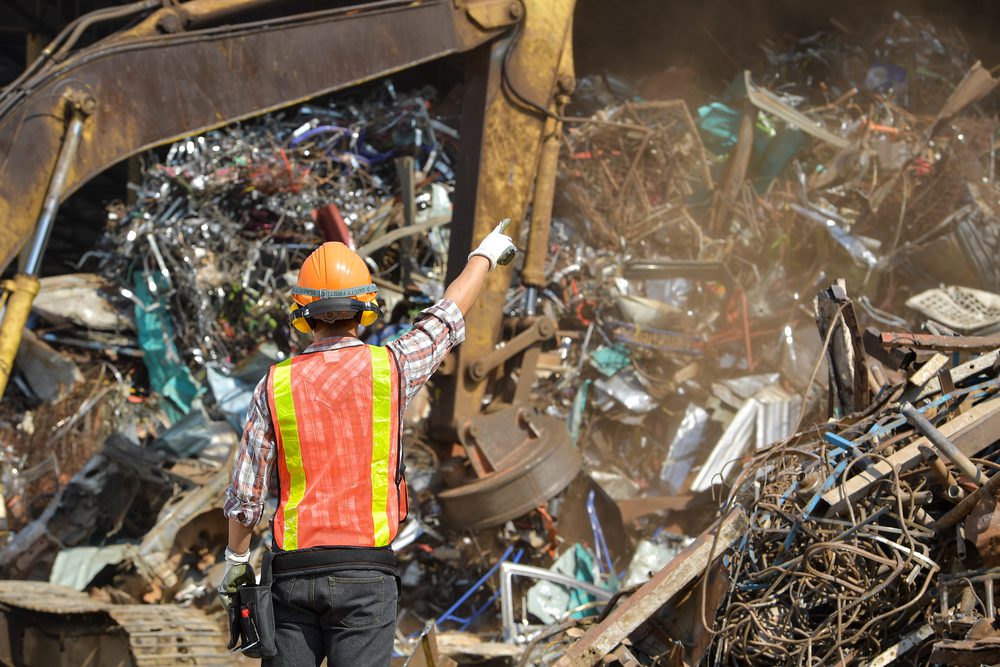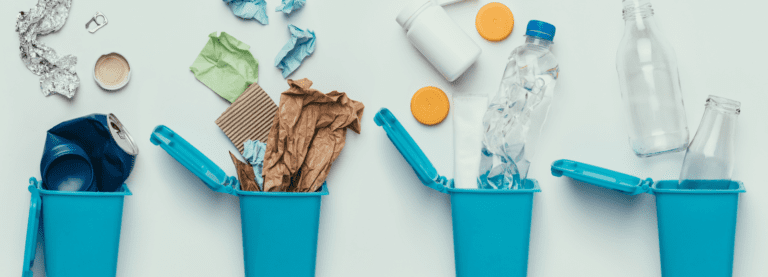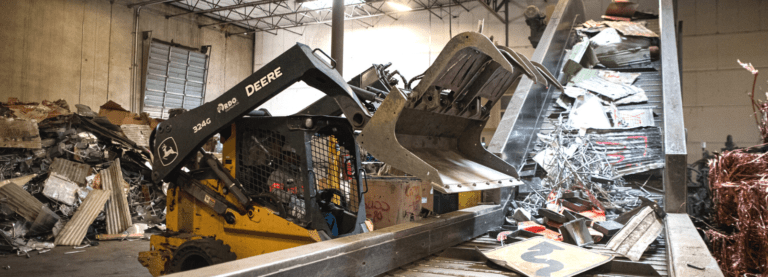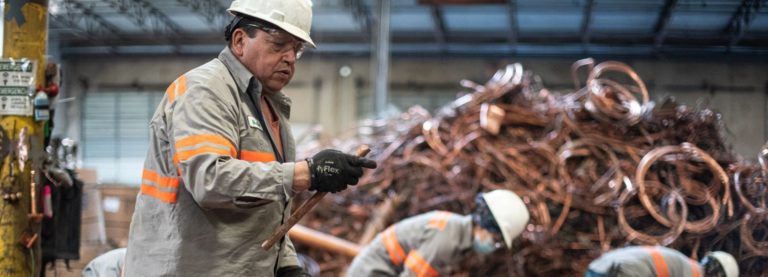Recycling Facts Update: Research shows that 94% of Americans surveyed back recycling initiatives. A further 74% agree that it should become a national priority. Yet, despite public support, only 34.7% of people actively recycle their waste—at the last count [1] [2]. So why the discrepancy? And why is recycling important in twenty-first-century America?
Most Americans blame a lack of access or inconvenience to necessary resources for not recycling their waste. But more recycling means less mining, quarrying, and logging of raw materials. That, in turn, cuts the demand for refining and processing the above, thus reducing toxic air, soil, and water pollution. Furthermore, effective recycling saves energy. And that means fewer greenhouse gas emissions released into the atmosphere.
This article explores some fascinating recycling facts and statistics you need to know. It also includes fun facts about recycling to help generate more interest and excitement. But first, a brief overview of America’s reluctance to lead the world’s recycling efforts.
Top Reasons Americans Don’t Recycle
This chart shows the findings of a survey conducted by OnePoll and commissioned by Covanta. It reveals the five main reasons Americans don’t regularly recycle [3].
The same survey found that 22% of participants lacked adequate information on recycling. A further 18% were unsure what could and couldn’t be reused. It’s clear from the research that Americans need more recycling knowledge and initiatives.
Americans Care About Waste
Of those questioned, 61% are highly concerned about the devastating effect marine pollution has on the world’s oceans. And around 82% said they want to be eco-friendlier, and 83% are prepared to pay more to change their ways.
Now to the fun facts about recycling, along with some fascinating statistics.
Recycling Facts – An Ancient History
In the 1970s, recycling became the new buzzword, and the environmental movement was born. But salvaging and reusing waste goes back much further, albeit for different reasons. For example, Japanese records show paper recycling was a thing as early as the 9th century. And American communities began to recycle cotton and linen rags in the 1690s [4].
The global history of recycling can fill an entire book and is beyond the scope of this article. But to keep things simple, here’s a glimpse of human life a century ago.
Domestic Waste Disposal in the 1920s
Landfills and garbage trucks didn’t exist 100 years ago. Back then, people had to get rid of their trash as best they could—especially in rural areas. They would either burn or bury it, depending on the material. But there was also less waste and much more reusing and upcycling of items compared to today. Put simply; a century ago people were better at it than we are today [5].
Global Solid Waste – A Growing Concern
Experts estimate the combined municipal solid waste produced annually is over two billion tons. But unfortunately, at least one-third of that is not managed in environmentally safe ways.According to the World Bank data, the global waste composition looks like this [6].
Scrap Metal Recycling on the Rise
According to World Bank data, scrap metal contributes 4% of the global waste composition. But both ferrous (magnetic) and non-ferrous recycling are on the rise.
Estimates suggest a growth rate of over 7% by 2025. The reasons include an increase in demand for steel and the industrial expansion of developing countries [7].
There’s Money in Scrap Metal
Some people supplement their primary income by recycling scrap metals. Others make a living solely from selling scrap. GEOMET is your friendly Dallas-based scrap metal recycler that buys and recycles waste metals from everyone. That includes the general public, small businesses, and large industrial and commercial clients.
GEOMET offers competitive prices for buyers and sellers of dependable metals. And our friendly team of experts makes the entire process seamless.
Learn More About What GEOMET Recycling Buys
10 Fun Recycling Facts & Statistics
This section looks at some fun facts and statistics on recycled municipal solid waste (MSW), otherwise known as garbage and trash. We’ll start with metal recycling, a well-established, highly competitive industry that spans the globe. All the metals listed below are 100% recyclable.
#1 Steel Recycling
Of all the recyclables, scrap steel is king. It never degrades, which is why the US recycles 60–80 million tons of it annually. Recycling steel saves enough energy to power 18M+ households for an entire year. Also worth mentioning is that 95% of the water used to recycle steel is itself recycled [8] [9].
#2 Aluminum Recycling
Aluminum is the most cost-effective metal to recycle compared to manufacturing from scratch. It is infinitely recyclable with no loss of its beneficial properties. Around 75% of the aluminum ever produced is still in circulation today. In the United States, 80% of all aluminum production is recycled [10].
#3 Copper Recycling
Humans first started to exploit copper some 10,000 years ago to create decorative artifacts. Today, it’s the third most 100% recyclable metal after iron and aluminum. Estimates suggest that 80% of all the mined copper is still in use today. The US currently recycles around 865,000 metric tons of scrap copper every year [11].
#4 Zinc Recycling
Zinc sits fourth on the most-used metals table. Zinc waste has many uses, including plating, water treatment, and the production of galvanized steel. Around 70% of zinc still comes from mined ores, while recycling accounts for about 30% [12] [13].
#5 Lead Recycling
Humans have exploited lead for over 6000 years. Today, many new products that require lead or lead components use metal salvaged and recycled from other products. It also boasts some of the highest recycling rates [14] [15].
#6 Tin Recycling
Tin cans only contain 0.15% tin, while the rest is thin steel. Around 50% of tin goes into the low-melting alloy solder used in electronics. And 12% is used to manufacture tinplate food cans and metal packaging. The remainder goes into tin chemicals, lead-acid battery products, and other applications [16].
Common metals are not the only materials recycled daily in the United States. Paper, glass, plastics, and e-waste are other forms of throwaway trash of significant recycling value.
#7 E-waste (Electronic Waste)
E-waste makes up just 2% of US landfill trash yet accounts for up to 70% of all toxic waste. Electronic scrap holds significant amounts of precious metals, but only 12.5% gets recycled. Cell phones and other electronic products dumped each year by Americans contain about $60 million worth of gold and silver [17] [18].
#8 Glass Recycling Facts
Glass accounts for 5% of all US garbage. Humans recycled glass for economic benefits as far back as 400 BC. Today, glass trash has no place in landfills. It’s 100% recyclable and lasts forever with no loss to its quality or purity. Recycling a single 8-ounce glass bottle saves enough energy from manufacturing to illuminate a 100W light bulb for about four hours [19] [20].
#9 Paper (26% of Landfill Waste)
Despite increased digitalization, the paperless office has yet to materialize. American businesses go through 2.1 trillion sheets of paper and cardboard each year. At the last count, paper had a recycling rate of 68.2%. Just one ton (20,000 pounds) of recycled paper saves 17 mature trees, thousands of gallons of water, hundreds of gallons of oil, and up to 4,000 kilowatts of energy [21] [22].
#10 Plastic Waste Recycling Facts
Plastic waste accounts for 18.5% of landfill waste. There are enough plastic bottles in US landfills to wrap around our planet five times. Currently, only 10% of plastic bottles make it to recycling plants. But one ton of recycled plastic bottles saves the equivalent energy used by a two-person household for at least 12 months [23] [24].
How to Sort Your Scrap Metals
You can sort metals in your recycling bin using a magnet. If the magnet sticks, that’s your ferrous iron and steel recyclables. For example, most drink cans will be aluminum, while food cans tend to be tin-plated steel (a great learning project for kids).
6 Good News Recycling Facts from Around the World
The rest of this recycling facts sheet looks at recycling more generally and at the strides we’ve made so far. These good news stories reveal some remarkable ideas and innovations worldwide.
- Britain’s Royal Mint to salvage gold from e-waste in 2023. Pioneering technology will recover precious metals from discarded electronic devices for reuse [25].
- Electronic waste has declined by 10% since the 2015 peak, a Yale study finds. Plus, new recycling technology means e-waste is fast becoming a resource [26].
- Germany’s second-largest city, Hamburg, is doing more saving and less dumping. The city diverts thrown-out products from landfills and repairs to resell in stores [27].
- Amazon has partnered with the US. Department of Energy & MIT to change the way we recycle plastic waste using brand new science [28].
- IPOS 2021 Global survey shows that 75% of people across 28 countries support a permanent ban on single-use plastics [29].
- Lithium-ion battery recycling. Li-Cycle uses new technology to break batteries down and reuse up to 95% of their valuable materials, helping reduce toxic chemicals entering landfills [30].
Contact GEOMET Recycle
Contact GEOMET if you want to learn more about our buy and sell scrap metal services. Or, call us directly at (972) 303-8849, Monday – Friday, between 7:00 am–4:30 pm.
Recycling Facts & Stats Links
- https://uspirg.org/news/94%-Americans-support-recycling/
- https://www.epa.gov/sites/only-35%-Americans-actively-recycle/
- https://nypost.com/2019/why-americans-don’t-recycle/
- https://nerc.org/a-brief-history-of-recycling/
- https://www.history.com/news/recycling-history-america
- https://datatopics.worldbank.org/global-waste-composition/
- https://www.marketsandmarkets.com/metal-recycling-on-the-rise/
- https://www.nationalmaterial.com/steel-and-recycling-fun-facts/
- https://www.steel.org/wp-content/60-80-tons-scap-steel/
- https://www.aluminum.org/aluminum-recycling/
- https://www.statista.com/recycled-volume-of-copper-usa/
- https://www.zinc.org/fourth-most-used-metal/
- https://galvanizeit.org/zinc-recycling-30%/
- https://www.biologicaldiversity.org/lead-use-over-6000-years/
- https://www.nrcan.gc.ca/lead-recycling/
- https://www.internationaltin.org/tin-recycling/
- https://www.motherjones.com/iwaste-70%-oftoxic-waste/
- https://rocnymarchforscience.org/e-waste-gold-and-silver/
- https://www.friendsofglass.com/400BC/
- https://lbre.stanford.edu/glass-recycling-100W-light-bulb/
- https://www.theworldcounts.com/US-office-12.1-trillion-sheets-of-paper/
- https://www.epa.gov/recycling/paper-rate-68%/
- https://adnas.com/fun-facts-about-plastic-recycling/
- https://www.recycleacrossamerica.org/2-person-household/
- https://www.royalmint.com/to-turn-e-waste-into-gold/
- https://onlinelibrary.wiley.com/e-waste-on-the-decline/
- https://theprogressnetwork.org/stilbruch/
- https://www.amazon.science/change-how-we-recycle-plastic/
- https://www.ipsos.com/en/attitudes-towards-single-use-plastics
- https://li-cycle.com/technology/






